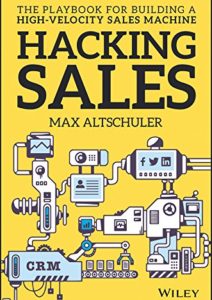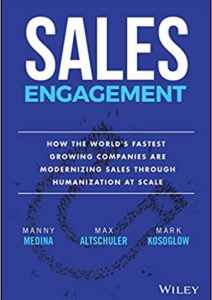Imagine trying to start your car without the wires connecting the ignition to the battery and starter. It just wouldn’t work, would it? It’s the same with the revenue engine of your company.
Sales, Marketing, and Customer Success are the three components of your revenue engine-starting system and Sales Engagement is the wire that connects them. This connection – or alignment – is a crucial element of any functional Sales Engagement strategy. Without it, your revenue engine is stuck in park.
Your revenue organization must be aligned in order to be fully prepared to sell and market in the modern era of fast-paced revenue generation. Alignment means that each team is routinely sharing feedback from the front lines, from customers, and sharing what messaging is resonating.
Yes, you need to be developing personas with marketing to master your outreach. And you’ve also got to speak to your customers to understand why they bought and how the solution is helping them.
To take modern revenue alignment to the next level – and get that engine roaring – your three revenue-generating orgs need to be connected and communicative.
So where do you start? Here are some key elements that all good revenue teams have in common:
Elements of a Successful Cross-org Alignment Strategy
Better metrics than MQL. Teams need mutually agreed upon metrics to track success. MQL works for Marketing, but means nothing to Sales and Customer Success. Switch to tracking these metrics that matter to all teams.
A reliable attribution model. Metrics are all well and good but not if you can’t track the source they’re coming from. Attribution is key and will help each team understand which strategies are working and where you should be putting your resources.
An integrated tech stack. CRM, Marketing Automation, and a Sales Engagement Platform are essential and, together, a good starting point, but then add other tech layers as needed and ensure the whole ecosystem seamlessly integrates.
An aligned messaging strategy. Be clear on the holistic message and who is the key messenger for each facet—a thought-leadership matrix can work wonders here. Marketing shouldn’t be sending out Sales-specific content and vice versa. Above all, the content for each team must be consistent and not contradict another team’s!
Clean, quality, centralized data. Accessible and functional data is key. Are you getting your data from reliable sources and cleaning it up regularly? Are you sharing it with the other teams? This will dramatically improve your productivity and reduce tedious back-and-forth communication between teams that “hog” their data.
Customer Success is in the loop. We hear a lot about Sales and Marketing alignment, but Customer Success alignment is no longer just a nice to have. It’s a must have. When CS is aligned on the current Sales Engagement strategy, this creates a seamless journey from prospect to customer to evangelist for your buyers.
Clearly defined prospect and customer personas. These are key to aligning the company around how to speak to different cohorts of customers and potential customers. Your ideal customer profiles must be documented and available to all customer-facing reps and managers, along with agreed-upon messaging that will create a consistent experience for everyone.
Empathy. This one almost goes without saying. Try shadowing the other departments for a day. Learn what problems they face and ask how you can make their jobs easier. At the end of the day, you’re a team. Have each other’s backs!
Most importantly, you need the best resources to get to true alignment. The new Book on Sales Engagement has all the metrics, attribution models, technology recommendations, and best practices that are essential for your organization. It’s the most up-to-date, in-depth guide to getting that revenue engine from 0 to 100 in record time.















Comments